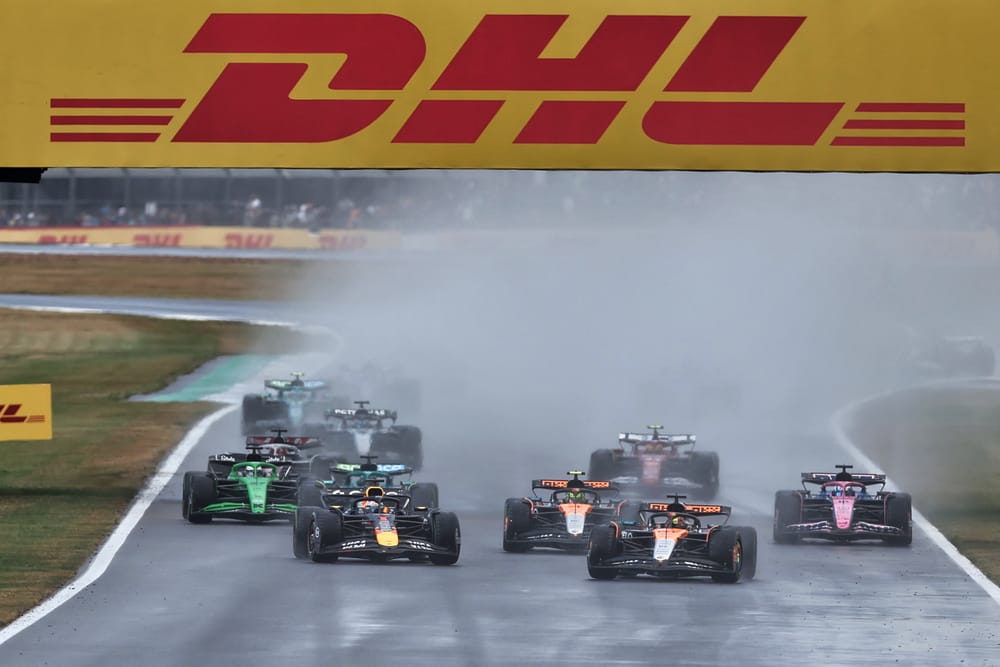A lot of the post-race focus has been on the 10-second penalty for a safety car restart rules breach that angered both Oscar Piastri and McLaren - but his driving was actually already on race control's radar before then.
McLaren has talked of seeking further clarity from the FIA about why the decision was made to punish the then-race leader over the lap 21 incident.
As McLaren boss Andrea Stella had explained. “We will reflect with the FIA. At no point do we want to have a controversy. At no point do we want to have conflicting interests."
We can easily guess the topic of conversation on Sunday evening, though when McLaren racing director Randeep Singh and Piastri’s manager Mark Webber were spotted deep in conversation with steward Nish Shetty in the Silverstone paddock.
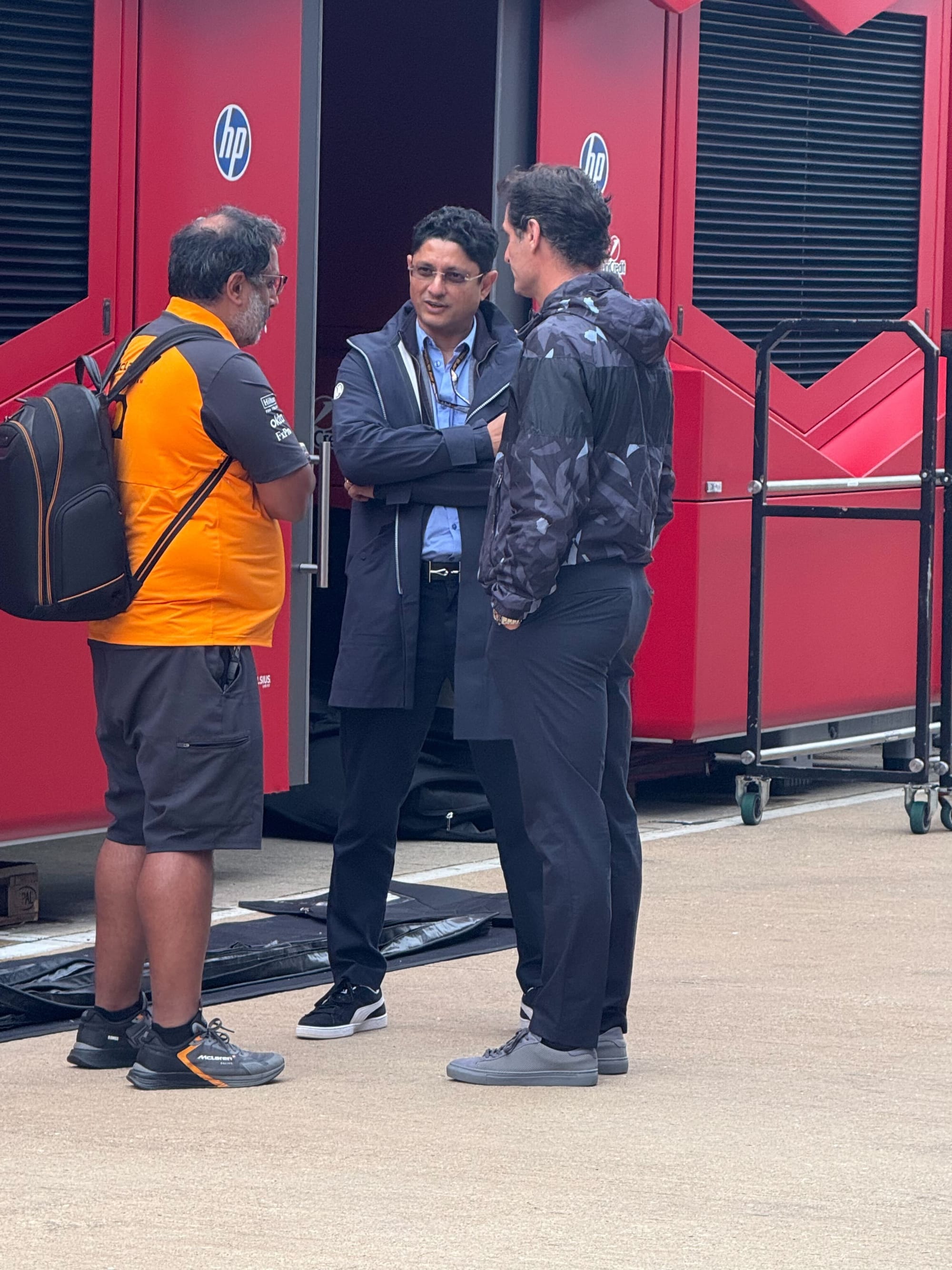
Like most things in F1 though, there are many layers to how events played out the way they did - and especially why the FIA moved on Piastri's lap 21 moment.
What the data says
From the stewards’ perspective, Piastri’s deceleration from 218km/h to 52km/h using a braking force of 59.2psi was “clearly” a breach of the regulations regarding safety car restarts.
This relates to Article 55.15 of F1’s Sporting Regulations that states: “From the point at which the lights on the car are turned out, drivers must proceed at a pace which involves no erratic acceleration or braking nor any manoeuvre which is likely to endanger other drivers or impede the restarts.”
What seemed to annoy McLaren the most was that there was a combination of factors that it felt had not been taken into account when deciding Piastri had broken this rule.
These include the fact the safety car lights went out quite late down the Hangar Straight, which left very little time to get heat into the tyres and brakes.
Plus there was a sense that maybe Max Verstappen had made a meal of the incident to make it look worse than it was.
Piastri himself was also at a loss to explain about why he picked up a penalty for the way he handled this restart – considering he had done something pretty much identical at the previous safety car restart on lap 17.
Digging into the data does indeed show that at one level, there was very little difference between what Piastri did on lap 17 and what happened on lap 21.
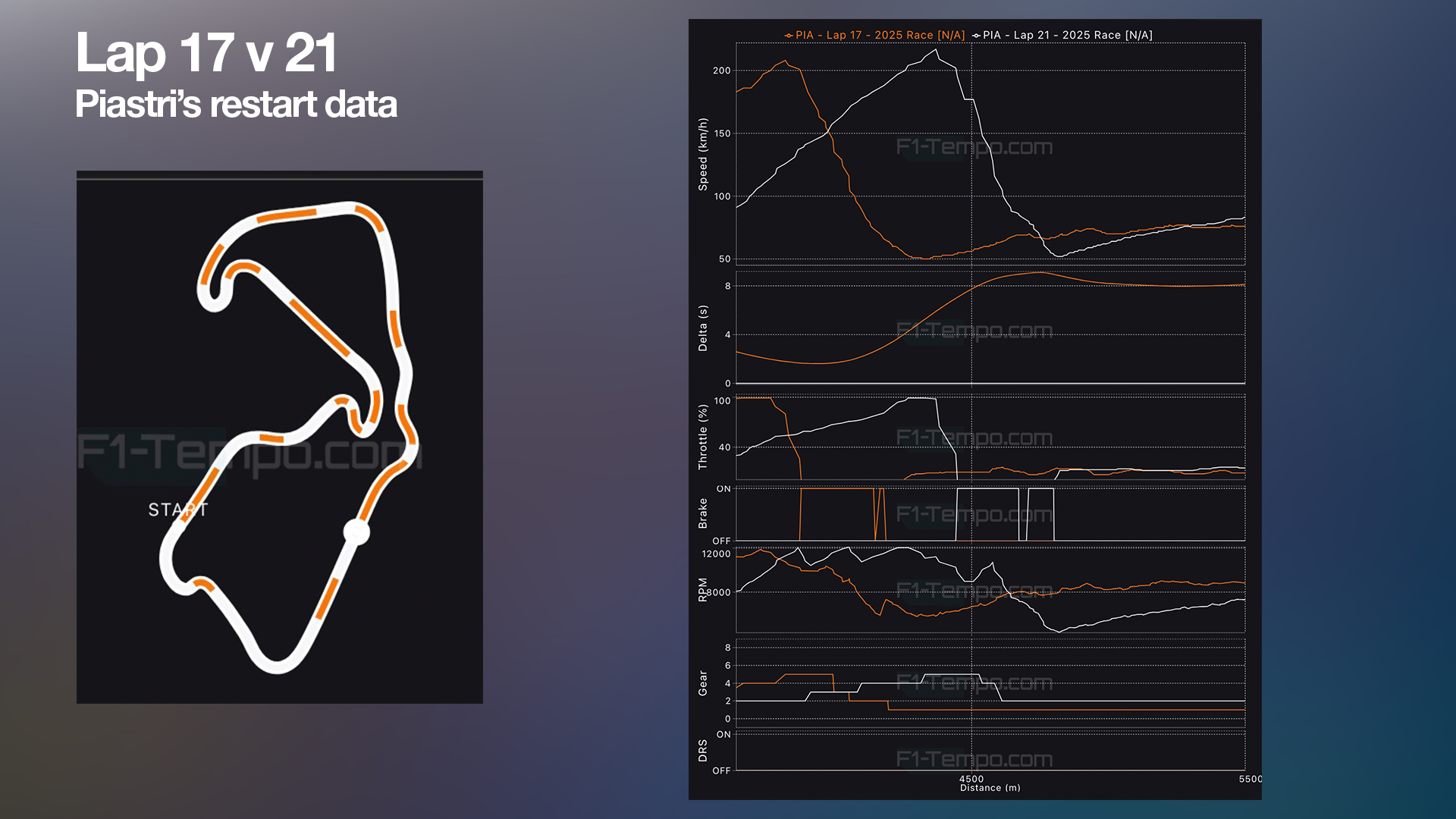
On lap 17, as Piastri’s exited Chapel onto the Hangar Straight with the safety car lights already off, he braked from 208km/h down to 51km/h (compared to the 218km/h to 52km/h) on lap 21.
Right behind him, Verstappen’s speeds were quite similar too. On lap 17, the Red Bull driver was doing 219km/h and he had to brake down to 43km/h, while on lap 21 he slowed from 221km/h down to 32 km/h.
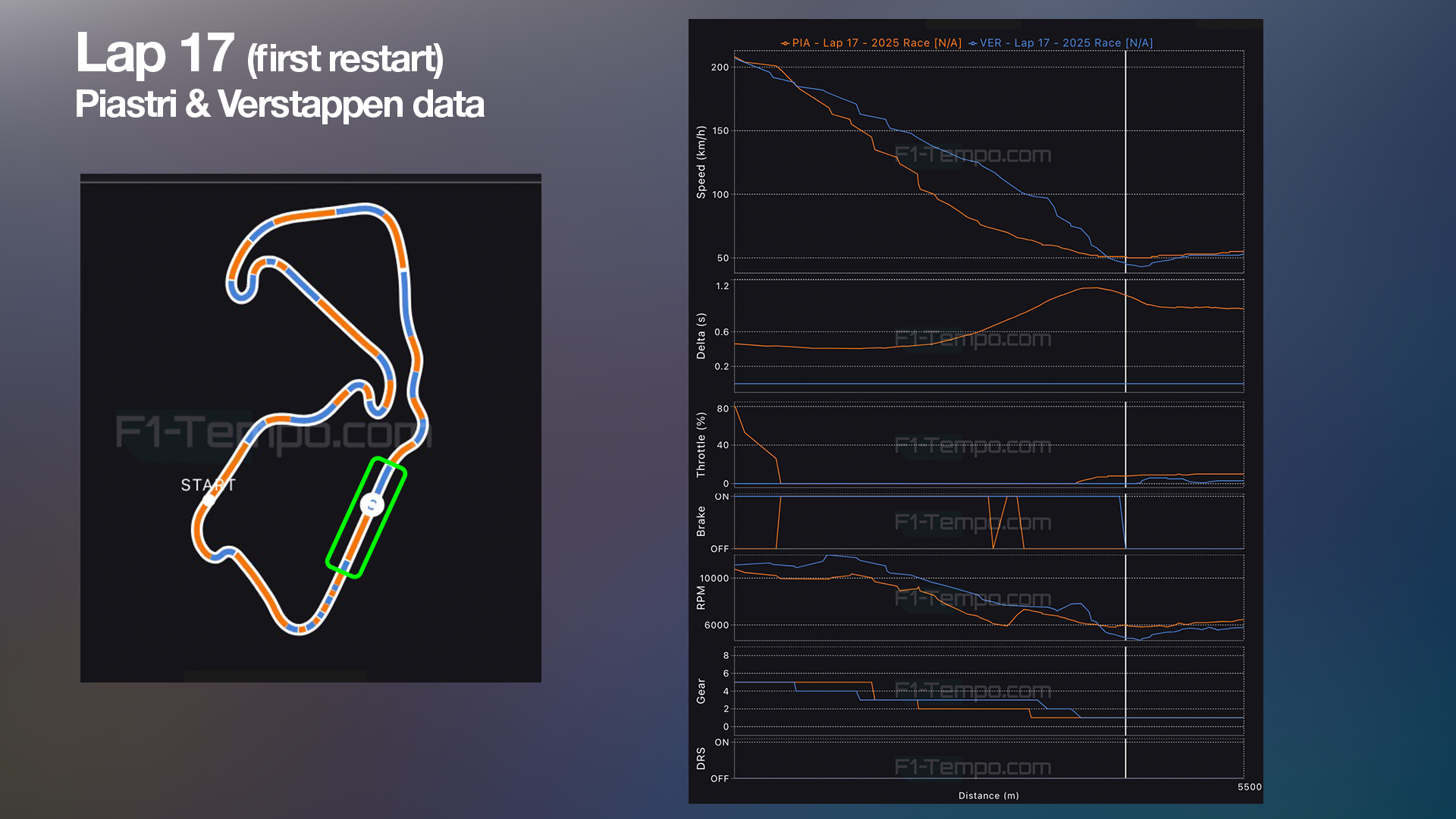
At the first restart, Verstappen was able to slow down in time to not risk running past Piastri, while on the second one he sailed straight past him.
Race control on alert
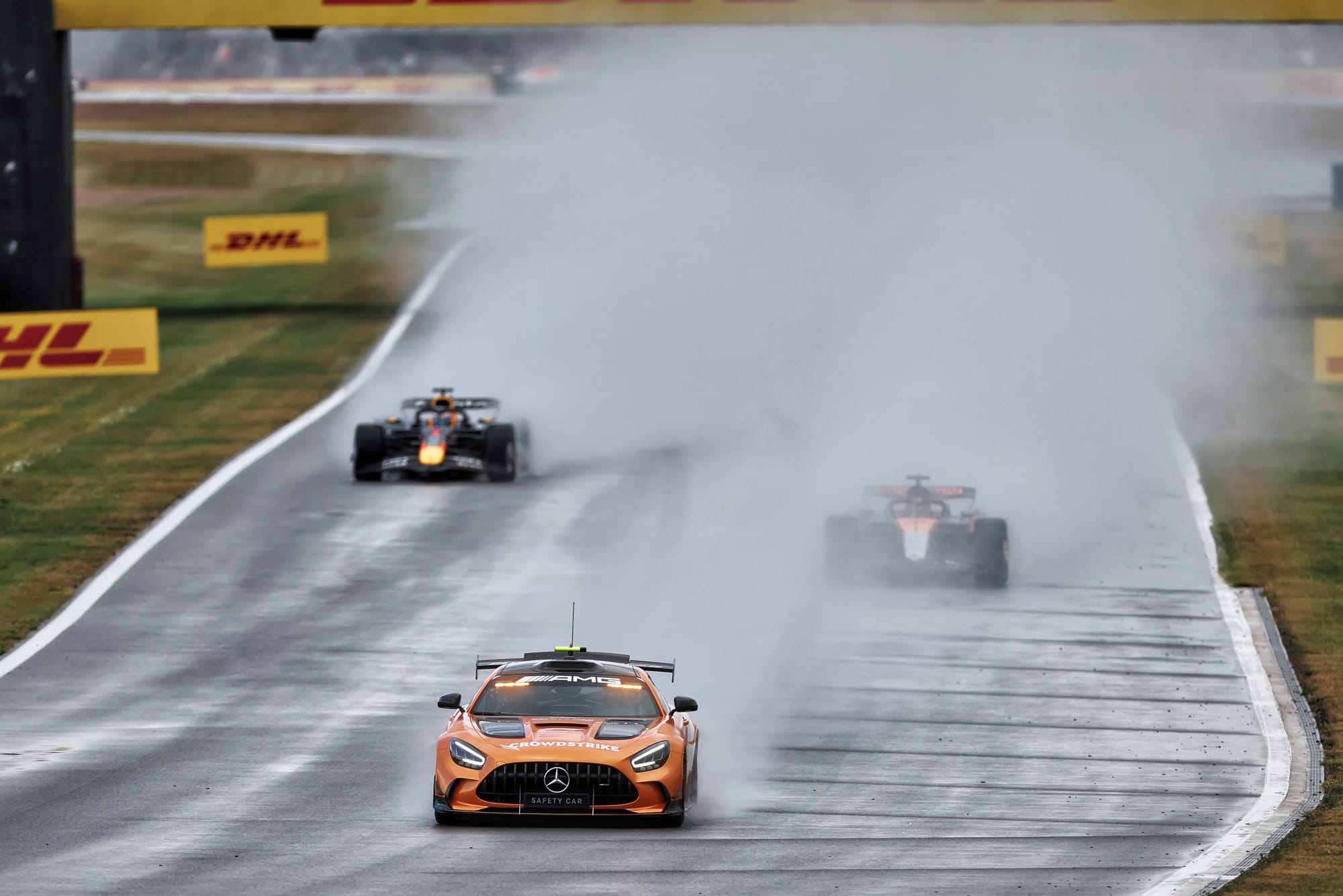
While those two safety car restarts do have some similarities, what is critical to understand here is that race control had not been completely happy with what Piastri had done at the first restart.
The Race has learned that there were discussions among officials about whether his heavy braking on the lap 17 incident was a breach of the rules already.
Footage of that first restart showed that Piastri’s antics had caused a concertina effect as the cars behind bunched up - and this is something that is not ideal.
When such a compressions happens – with cars at the front of the pack braking as those behind accelerate because they think the restart is happening – that is the maximum danger time.
The pile-up at the 2020 Tuscan Grand Prix at Mugello was caused by the cars at the rear of the pack going flat out, thinking the leaders had pushed on.

And if you rewind further, one of the most famous incidents involving some erratic braking by a leader at a safety car restart was the 2000 Italian Grand Prix.
Michael Schumacher braked heavily on the run down to Parabolica during a safety car restart – and in the pack, Jenson Button had to veer off the track after taking avoiding action to not run into the back of team-mate Ralf Schumacher.
At Silverstone, while the cars stayed in order at the first restart, Piastri's heavy braking was looked at again by race control, and it was discussed - but it was ultimately felt that it did not warrant the need for a formal investigation.
However, with race control having been put on alert about what happened and so keeping a close eye on any repeat behaviour, when similar events played out on lap 21 it felt that the matter had to go to the stewards.
It is perhaps no different to football matches where a referee will let a marginal tackle go for a first offence but, when a player does the exact same thing again, they decide that such behaviour needs stamping out and a yellow card is given.
Red Bull's Canada comparison

The British GP incident inevitably triggered some immediate comparisons with what happened between George Russell and Max Verstappen at the Canadian Grand Prix.
There, Red Bull protested Russell for having braked heavily behind the safety car – with subsequent data revealing the Mercedes driver had used a 30psi braking force to reduce his speed from 140km/h to 85km/h.
After Piastri’s penalty, both Verstappen and Red Bull team boss Christian Horner expressed some surprise not that the stewards had stepped in this time, but that they had not done so in Montreal.
Horner said: “I wasn't surprised to see him [Piastri] get a penalty. That was what you would expect. It was probably more surprising that Russell didn't get one in Montreal, to be honest with you.”
Even Piastri himself suggested afterwards that the avoiding action Verstappen had to do in Canada was much worse than what happened at Silverstone.
“I don't think he had to evade me,” he said. “I think he managed the first time. Going back to Canada, I think you had to evade more there than you did today. So, yeah, I'm a bit confused to say the least.”
But there is a significant difference between the incidents, because the rules of what drivers can do when the safety car lights are on are completely different to when they are off.
When the lights are on, drivers’ behaviour is dictated by a catch all of Article 55.5 which states: “No car may be driven unnecessarily slowly, erratically or in a manner which could be deemed potentially dangerous to other drivers or any other person at any time whilst the safety car is deployed.”
Braking, accelerating and weaving here are deemed normal as a means of keeping brake and tyre temperatures up.
Once the lights go out, then the demand changes to force drivers to keep a constant pace to avoid accidents: “which involves no erratic acceleration or braking nor any other manoeuvre.”
This is something that drivers have also been specifically reminded of in the latest FIA Driver Guidelines.
There, while it says they are allowed to dictate the pace and choose when they can accelerate, they still cannot drive “slowly, erratically or in a manner deemed potentially dangerous to other drivers at any time.”
So while Piastri may have felt it unfair that he got penalised for braking at the safety car restart – something he said he had done “for five laps before that”, the expectations when the lights go out are different to what you can do when the cars are in a train.
There is no way McLaren will be able to roll back what has happened, but the events will likely ensure that it does not fall foul of similar circumstances in the future.
Stella added: “I think we will see if there's anything to learn on our side, and I'm sure Oscar will use this motivation for being even more determined for the races to come and try and win as many as possible.”


